- Home
- Charles de Lint
Ivory and the Horn
Ivory and the Horn Read online
From “Bird Bones and Wood Ash”
At first, Jaime knows them only as women with the faces of animals: mare and deer, wild boar and bear, raven and toad. And others. So many others. Following her.
They smell like forest loam and open field, like wild apple blossoms and nuts crushed underfoot. Their arms are soft, but their hands are callused and hard, the palms like leather. Where they have been, they leave behind a curious residue of dried blood and rose petals, tiny bird bones and wood ashes.
In those animal faces, their eyes are disconcertingly human, but not mortal. They are eyes that have seen decades pass as we see years, that have looked upon Eden and Hades. And their voices, at times a brew of dry African veldt whispers and sweet-toned crystal bells, looping through the clutter of city sound, echoing and ringing in her mind, heard only from a distance.
They hold Jaime in their soft arms, touch her hands with their callused palms. Fairy godmothers in animal guises, bestowing their dangerous gifts.
By Charles de Lint
from Tom Doherty Associates
Dreams Underfoot
The Fair at Emain Macha
Into the Green
The Ivory and the Horn
Jack of Kinrowan
The Little Country
Memory and Dream
Moonheart
Spiritwalk
Svaha
NOTE: If you purchased this book without a cover you should be aware that this book is stolen property. It was reported as “unsold and destroyed” to the publisher, and neither the author nor the publisher has received any payment for this “stripped book.”
This is a work of fiction. All the characters and events portrayed in this book are fictitious, and any resemblance to real people or incidents is purely coincidental.
THE IVORY AND THE HORN
Copyright © 1995 by Charles de Lint
All rights reserved, including the right to reproduce this book, or portions thereof, in any form.
Cover art by Terri Windling Edited by Terri Windling
Grateful acknowledgments are made to:
Happy Rhodes for the use of the lines from “Words Weren’t Made for Cowards” from her album Warpaint. Copyright © 1991 by Happy Rhodes; lyrics reprinted by permission. For more information about Rhodes’s music, contact Aural Gratification, P.O. Box 86458, Academy Station, Albany, NY 12208.
Kiya Heartwood for the use of a verse of “Wishing Well” from her album True Frontiers. Copyright © 1993 by Kiya Heartwood; lyrics reprinted by permission. For more information about Heartwood’s music, contact Pame Kingfisher at Roaddog Booking & Management, (800) 382-5895.
A Tor Book
Published by Tom Doherty Associates, Inc. 175 Fifth Avenue New York, NY 10010
Tor Books on the World Wide Web: http://www.tor.com
Tor® is a registered trademark of Tom Doherty Associates, Inc. ISBN: 0-812-53408-5
Library of Congress Card Catalog Number: 94-45340
First edition: April 1995
First mass market edition: March 1996
Printed in the United States of America
09876543
COPYRIGHT ACKNOWLEDGMENTS
“Waifs and Strays” first appeared in Journeys to the Twilight Zone, edited by Carol Serling; DAW Books, 1993. Copyright © 1993 by Charles de Lint.
“Mr. Truepenny’s Book Emporium and Gallery” was first published by Cheap Street, 1992. Copyright © 1992 by Charles de Lint.
“The Forest Is Crying” first appeared in The Earth Strikes Back, edited by Richard Chizmar; Mark Zeising Books, 1994. Copyright © 1994 by Charles de Lint.
“The Wishing Well” was first published by Axolotl Press, 1993. Copyright © 1993 by Charles de Lint.
“Dead Man’s Shoes” first appeared in Touch Wood: Narrow Houses, Volume Two, edited by Peter Crowther; Little, Brown and Company, 1993. Copyright © 1993 by Charles de Lint.
“Bird Bones and Wood Ash” is original to this collection.
“A Tempest in Her Eyes” first appeared in Weird Tales from Shakespeare, edited by Katharine Kerr and Martin H. Greenberg; DAW Books, 1994. Copyright © 1994 by Charles de Lint.
“Saxophone Joe and the Woman in Black” first appeared in Catfantastic III, edited by Andre Norton and Martin H. Greenberg; DAW Books, 1994. Copyright © 1994 by Charles de Lint.
“The Bone Woman” was first published by Triskell Press, 1992. Copyright © 1992 by Charles de Lint.
“Pal o’ Mine” first appeared in Christmas Forever, edited by David G. Hartwell; Tor Books, 1993. Copyright © 1993 by Charles de Lint.
“Where Desert Spirits Crowd the Night” first appeared in Worlds of Fantasy and Horror #2, Fall 1994. Copyright © 1994 by Charles de Lint.
“Dream Harder, Dream True” first appeared in Temporary Walls, edited by Greg Ketter and Robert T. Garcia; Dream-Haven Books, 1993. Copyright © 1993 by Charles de Lint.
“The Pochade Box” first appeared in Thunders Shadow, Vol. V, No. 1, 1994. Copyright © 1994 by Charles de Lint.
“Coyote Stories” was first published by Triskell Press, 1993. Copyright © 1993 by Charles de Lint.
“The Forever Trees” first appeared in Worlds of Fantasy and Horror #2, Fall 1994. Copyright © 1994 by Charles de Lint.
for
Jane Yolen,
who showed me how to touch magic
and pass it on
ACKNOWLEDGMENTS
As anyone involved knows, contrary to the belief that artists create in the isolation of their workspaces, the act of creation is not a solitary endeavor. Without the inspiration and support I’ve received over the years, these stories wouldn’t exist, so this time out I’d like to thank:
My wife, MaryAnn, for her help in the genesis of many of these stories and in their fine-tuning, always knowing when and where to say the right thing;
My editors at Tor, Terri Windling, Patrick Nielsen Hay-den, Donald G. Keller and Greg Cox, for having enough faith in these stories to request a second volume sight unseen, and for making the publishing process so painless;
My agent, Richard Curtis, for finding me the spaces between novels when I could write these stories;
Altan, Tori Amos, Sarah Bauhan, Lisa Germano, Kiya Heartwood, Maria Kalaniemi, Peter Kater, Jon Mark, R. Carlos Nakai, Johnette Napolitano, Happy Rhodes and Ian Tamblyn, whose music keeps me sane;
All those editors who first asked for the stories collected herein: Kurt Busiak, Richard Chizmar, Pete Crowther, Bob Garcia, Marty Greenberg, David Hartwell, Kit Kerr, Greg Ketter, Andre Norton, Jan and George O’Nale, Kris Rusch, Darrell Schweitzer, Erik Seeker, Carol Serling and Dean Smith.
A few notes concerning individual stories:
In “The Bone Woman,” the idea of La Huesera comes from the folklore of the American Southwest. My thanks to Clarissa Pinkola Estes for making me aware of the tale.
In “Where Desert Spirits Crowd the Night” the story of Coyote and the Buzzard is based upon traditional Kick-apoo folklore.
“The Wishing Well” was written for MaryAnn, who wanted to know what was in the well, and for Jane Siberry, for her own “strange well” of songs. Special thanks to Dr. Sean Costello (a fine author in his own right) for technical advice.
—Charles de Lint
Ottawa, Canada
CONTENTS
WAIFS AND STRAYS
MR. TRUEPENNY’S BOOK EMPORIUM AND GALLERY
THE FOREST IS CRYING
THE WISHING WELL
DEAD MAN’S SHOES
BIRD BONES AND WOOD ASH
A TEMPEST IN HER EYES
SAXOPHONE JOE AND THE WOMAN IN BLACK
THE BONE WOMAN
PAL O’ MINE
WHERE DESERT SPIRITS CROWD THE NIGHT
THE POCHADE BOX
COYOTE STORIES
THE FOREVER TREES
FATHER, O FATHER, WHAT DO WE HERE
IN THIS LAND OF UNBELIEF AND FEAR?
THE LAND OF DREAMS IS BETTER FAR,
ABOVE THE LIGHT OF THE MORNING STAR.
—WILLIAM BLAKE
WE ARE ALL IN THE GUTTER, BUT SOME
OF US ARE LOOKING AT THE STARS.
—OSCAR WILDE
WAIFS AND STRAYS
Do I have to dig,
Do I have to prod;
Reach into your chest
And pull your feelings out?
—Happy Rhodes, from “Words Weren’t Made for Cowards”
1
There’s a big moon glowing in the sky, a swollen circle of silvery-gold light that looks as though it’s sitting right on top of the old Clark Building, balancing there on the northeast corner where the twisted remains of a smokestack rises up from the roof like a long, tottery flagpole, colors lowered for the night, or maybe like a tin giant’s arm making some kind of semaphore that only other tin giants can understand. I sure don’t.
But that doesn’t stop me from admiring the silhouette of the smokestack against that fat moon as I walk through the rubble-strewn streets of the Tombs. I feel like a stranger and I think, That moon’s a stranger, too. It doesn’t seem real; it’s more like the painted backdrop from some forties soundstage, except there’s no way anybody ever gave paint and plywood this kind of depth. We’re both strangers. That moon looks like it might be out of place anywhere, but I belonged here once.
Not anymore, though. I’m not even supposed to be here. I’ve got responsibilities now. I’ve got duties to fulfill. I should be Getting Things Done like the good little taxpaying citizen I’m trying to be, but instead I’m slumming, standing in front of my old squat, and I couldn’t tell you why I’ve come. No, that’s not quite right. I know, I guess; I just can’t put it into words.
“You’ve got to see the full moon in a country sky sometime,” Jackie told me the other day when she got back from her girlfriend’s cottage. “It just takes over the sky.”
I look up at it again and don’t feel that this moon’s at all diminished by being here. Maybe because in many respects this part of the city’s just like a wilderness—about as close to the country as you can get in a place that’s all concrete and steel. Some people might say you’d get that feeling more in a place like Fitzhenry Park, or on the lakefront where it follows the shoreline beyond the Pier, westward, out past the concession stands and hotels, but I don’t think it’s quite the same. Places like that are where you can only pretend it’s wild; they look right, but they were tamed a long time ago. The Tombs, though, is like a piece of the city gone feral, the wild reclaiming its own—not asking, just taking.
In this kind of moonlight, you can feel the wilderness hiding in back of the shadows, lips pulled in an uncurbed, savage grin.
I think about that as I step a little closer to my old squat and it doesn’t spook me at all. I find the idea kind of liberating. I look at the building and all I see is a big, dark, tired shape hulking in the moonlight. I like the idea that it’s got a secret locked away behind its mundane facade, that’s there’s more to it than something that’s been used up and then just tossed away.
Abandoned things make me feel sad. For as long as I can remember I’ve made up histories for them, cloaked them in stories, seen them as frog princes waiting for that magic kiss, princesses being tested with a pea, little engines that could if only they were given half a chance again.
But I’m pragmatic, too. Stories in my head are all well and fine, but they don’t do much good for a dog that some guy’s tossed out of a car when he’s speeding through the Tombs and the poor little thing breaks a leg when it hits the pavement so it can’t even fend for itself—just saying the feral dogs that run in these streets give it half a chance, When I can—if I get to it in time—I’m the kind of person who’ll take it in.
People have tried to take me in, but it never quite works out right. Bad genes, I guess. Bad attitude. It’s not the kind of thing I ever worried about much till the past few weeks.
I don’t know how long I’ve been standing on the street, not even seeing the building anymore. I’m just here, a small shape in the moonlight, a stray dream from the safe part of the city that got lost and found itself wandering in this nightland that eats small dreams, feeds on hopes. A devouring landscape that fed on itself first and now preys on anything that wanders into its domain.
I never let it have me, but these days I wonder why I bothered. Living in the Tombs isn’t much of a life, but what do you do when you don’t fit in anywhere else?
I start to turn away, finally. The moon’s up above the Clark Building now, hanging like a fat round flag on the smokestack, and the shadows it casts are longer. I don’t want to go, but I can’t stay. Everything that’s important to me isn’t part of the Tombs anymore.
The voice stops me. It’s a woman’s voice, calling softly from the shadows of my old squat.
“Hey, Maisie,” she says.
I feel like I should know her, this woman sitting in the shadows, but the sense of familiarity I get from those two words keeps sliding away whenever I reach for it.
“Hey, yourself,” I say.
She moves out into the moonlight, but she’s still just a shape. There’s no definition, nothing I can pin the sliding memories onto. I get an impression of layers of clothing that make a skinny frame seem bulky, a toque pulled down over hair that might be any color or length. She’s dressed for winter though the night’s warm and she’s got a pair of shopping bags in each hand.
I’ve known a lot of street people like that. Hottest day of the summer and they still have to wear everything they own, all at once. Sometimes it’s to protect themselves from space rays; sometimes it’s just so that no one’ll steal the little they’ve got to call their own.
“Been a long time,” she says, and then I place her.
It’s partly the way she moves, partly the voice, partly just the shape of her, though in this light she doesn’t look any different from a hundred other bagladies.
The trouble is, she can’t possibly wear the name I call up to fit her because the woman it used to belong to has been dead for four years. I know this, logically, intellectually, but I can’t help trying it on for size all the same.
“Shirl?” I say. “Is that you?”
Shirley Jones, who everybody on the street knew as Granny Buttons because she carried hundreds of them around in the many pockets of her dresses and coats.
The woman on the street in front of me bobs her head, sticks her hands in the pockets of the raincoat she’s wearing over all those layers of clothing, and I hear the familiar rattle of plastic against wood against bone, a soft clickety-clickety-click that I never thought I’d hear again.
“Jesus, Shirley—”
“I know, child,” she says. “What am I doing here when I’m supposed to be dead?”
I’m still not spooked. It’s like I’m in a dream and none of this is real, or at least it’s only as real as the dream wants it to be. I’m just happy to see her. Granny Buttons was the person who first taught me that “family” didn’t have to be an ugly word.
She’s close enough now that I can even see some of her features. She doesn’t look any different than she did when she died. She’s got the same twinkle in her brown eyes—part charm and part crazy. Her coffee-colored skin’s as wrinkled as a piece of brown wrapping paper that you’ve had in your back pocket for a few days. I see it isn’t a toque she’s wearing, but that same almost conical velour cap she always wore, her hair hanging out from below in dozens of unwashed, uncombed dreadlocks festooned with tiny buttons of every shape and description. She still smells the same as well—a combination of rosehip sachet and licorice.
I want to hug her, but I’m afraid if I touch her she’ll just drift apart like smoke.<
br />
“I’ve missed you,” I say.
“I know, child.”
“But how… how can you be here… ?”
“It’s like a riddle,” she says. “Remember our treasure hunts?”
I nod my head. How can I forget? That’s where I first learned about the freebies you can find in behind the bookstores, where I was initiated into what Shirley liked to call the rehab biz.
“If you cherish something enough,” she told me, “it doesn’t matter how old, or worn, or useless it’s become; your caring for it immediately raises its value in somebody else’s eyes. It’s just like rehab—a body’s got to believe in their own worth before anybody can start fixing them, but most people need someone to believe in them before they can start believing in themselves.
“You know, I’ve seen people pay five hundred dollars for something I took out of their trash just the week before— only because they saw it sitting on the shelf of some fancy antique shop. They don’t even remember that it once was theirs.
” ‘Course the dealer only paid me fifty bucks for it, but who’s complaining? Two hours before I came knocking on his back door, it was sitting at the end of the curb in a garbage can.”
Garbage days we went on our treasure hunts. Shirley probably knew more about collection days than the city crews did themselves: when each borough had its pickup, what the best areas were depending on the time of year, when you had to make your rounds in certain areas to beat the flea market dealers on their own night runs. We had dozens of routes, from Foxville down into Crowsea, across the river to Ferryside and the Beaches, from Chinatown over to the East End.
We’d head out with our shopping carts, sensei baglady and her apprentice, on a kind of Grail quest. But what we found was never as important as the zen of our being out there in the first place. Each other’s company. The conversation. The night’s journey as we zigzagged from one block to another, checking out this alleyway, that bin, those Dumpsters.

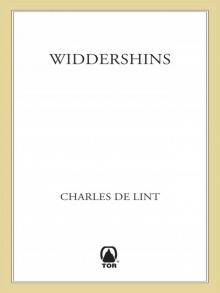 Widdershins
Widdershins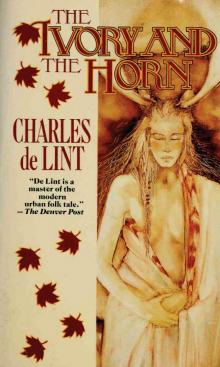 The Ivory and the Horn
The Ivory and the Horn Yarrow
Yarrow The Blue Girl
The Blue Girl Spirits in the Wires
Spirits in the Wires The Painted Boy
The Painted Boy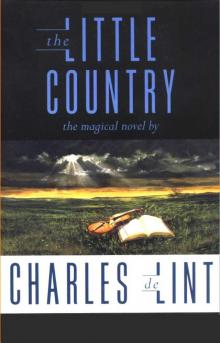 The Little Country
The Little Country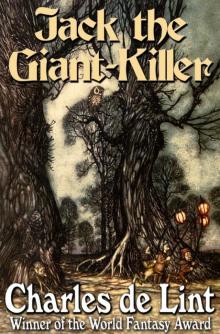 Jack of Kinrowan: Jack the Giant-Killer / Drink Down the Moon
Jack of Kinrowan: Jack the Giant-Killer / Drink Down the Moon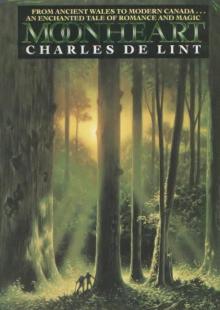 Moonheart
Moonheart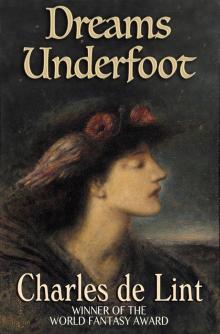 Dreams Underfoot
Dreams Underfoot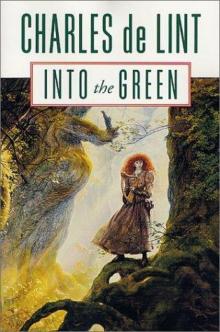 Into the Green
Into the Green Trader
Trader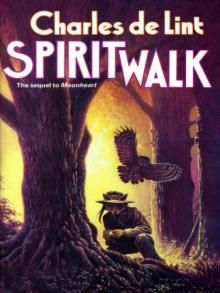 Spiritwalk
Spiritwalk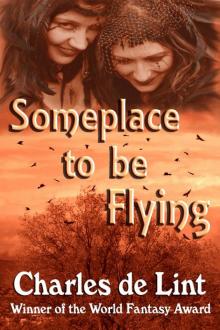 Someplace to Be Flying
Someplace to Be Flying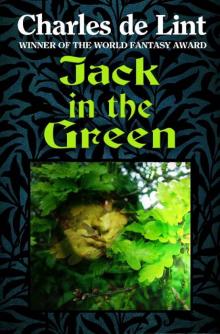 Jack in the Green
Jack in the Green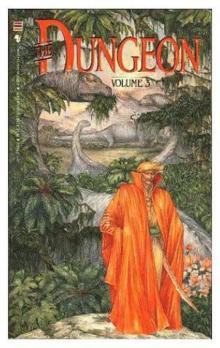 The Valley of Thunder
The Valley of Thunder Out of This World
Out of This World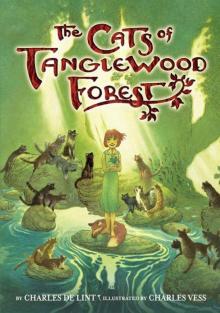 The Cats of Tanglewood Forest
The Cats of Tanglewood Forest Seven Wild Sisters
Seven Wild Sisters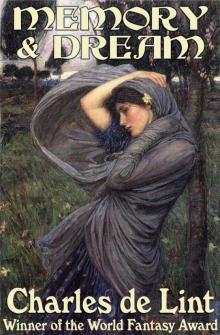 Memory and Dream
Memory and Dream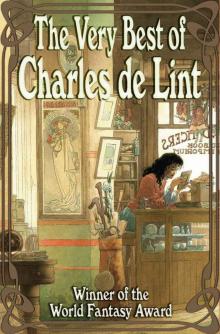 The Very Best of Charles De Lint
The Very Best of Charles De Lint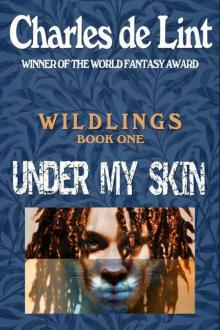 Under My Skin
Under My Skin Forests of the Heart
Forests of the Heart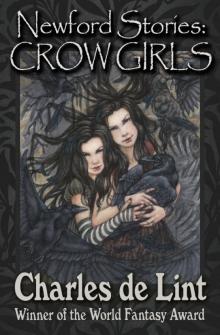 The Newford Stories
The Newford Stories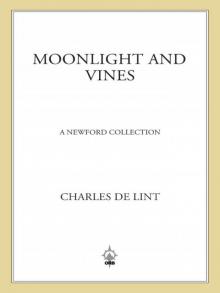 Moonlight and Vines
Moonlight and Vines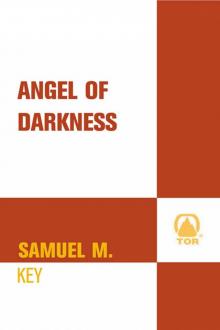 Angel of Darkness
Angel of Darkness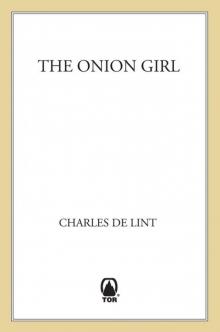 The Onion Girl
The Onion Girl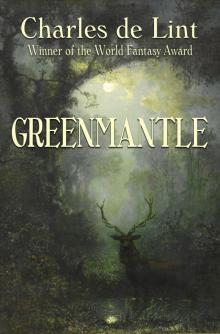 Greenmantle
Greenmantle Waifs And Strays
Waifs And Strays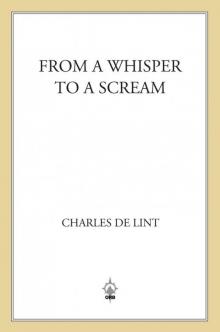 From a Whisper to a Scream
From a Whisper to a Scream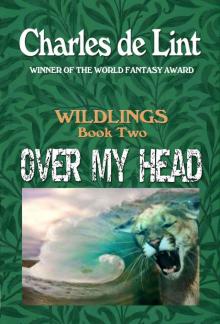 Over My Head
Over My Head The Ivory and the Horn n-6
The Ivory and the Horn n-6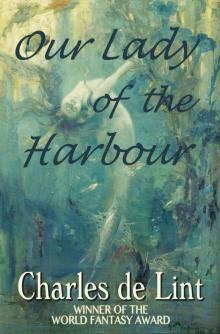 Our Lady of the Harbour
Our Lady of the Harbour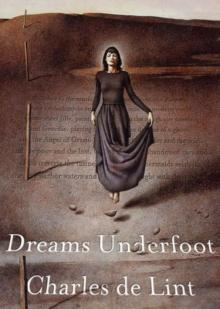 Dreams Underfoot n-1
Dreams Underfoot n-1 Jack the Giant-Killer (Jack of Kinrowan Book 1)
Jack the Giant-Killer (Jack of Kinrowan Book 1)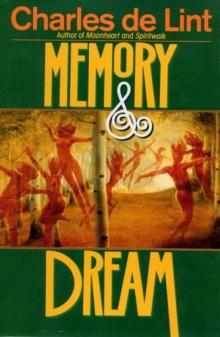 Memory and Dream n-5
Memory and Dream n-5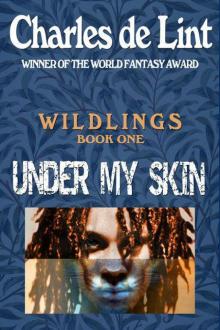 Under My Skin (Wildlings)
Under My Skin (Wildlings) Newford Stories
Newford Stories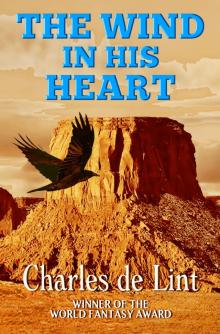 The Wind in His Heart
The Wind in His Heart Ivory and the Horn
Ivory and the Horn